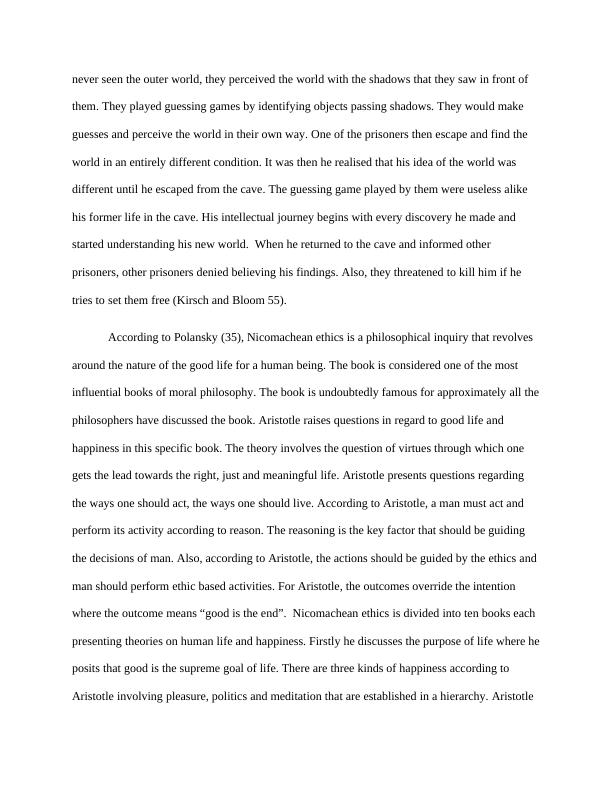Comparison of Plato and Aristotle's Works: The Allegory of the Cave and Nicomachean Ethics
5 Pages1436 Words313 Views
Added on 2023-04-08
About This Document
This essay compares and contrasts the works of Plato and Aristotle, focusing on The Allegory of the Cave and Nicomachean Ethics. It discusses the concepts of knowledge, perception, ethics, and virtues presented by the two philosophers and their contributions to society and the pursuit of happiness.
Comparison of Plato and Aristotle's Works: The Allegory of the Cave and Nicomachean Ethics
Added on 2023-04-08
ShareRelated Documents
End of preview
Want to access all the pages? Upload your documents or become a member.
Comparison of Aristotle and Plato's Works: Nicomachean Ethics and The Allegory of the Cave
|5
|1310
|73
Comparison and Contrast of Plato and Aristotle: The Allegory of the Cave and Nicomachean Ethics
|5
|1648
|34
The Power of Looking for Reasonable People
|5
|1322
|88
Plato's Allegory of the Cave
|4
|1019
|81
How Plato's Allegory of the Cave is Still Relevant
|5
|1017
|30
Institutional Affiliation | What is Truth |
|5
|1352
|14


